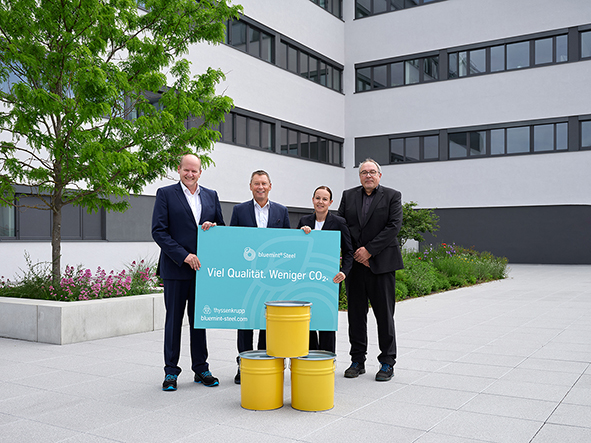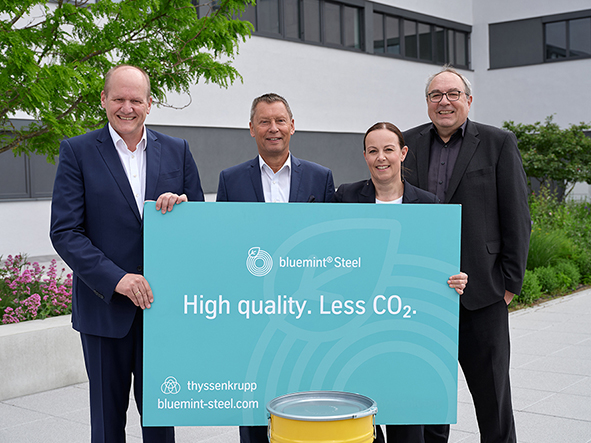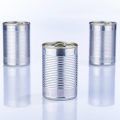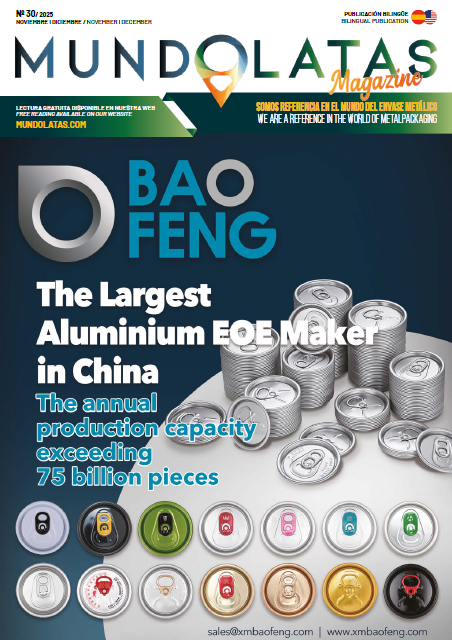Sika Deutschland GmbH now uses bluemint® steel with CO2 reduction for its tinplate buckets. To this end, thyssenkrupp Rasselstein will supply up to 3,000 tons of bluemint® steel to metal packaging manufacturer Muhr & Söhne in 2023.
Successful collaboration as an important step in terms of sustainability
From now on, only steel for packaging with reduced CO2 emissions will be used for tinplate buckets from Sika GmbH. This is the result of the successful collaboration between the only German tinplate manufacturer thyssenkrupp Rasselstein in Andernach, the metal packaging manufacturer Muhr & Söhne based in Attendorn, as well as Sika, the international specialty chemicals company based in Stuttgart.
“In the production of the new bluemint® packaging steels, we clearly focus on CO2 reduction: By using biomethane and specially processed steel scrap, we can save up to 69% of our CO2 emissions, which makes the packaging steel even more sustainable.” explains Dr. Peter Biele, CEO of thyssenkrupp Rasselstein. Packaging steel is also a European leader in recycling rates: 85.5% of tinplate packaging is recycled. This makes tinplate packaging the most recycled packaging material in Europe.
Muhr & Söhne transforms innovative bluemint® steel into tinplate cubes. For Klaus Wilmes, CEO of Muhr & Söhne, sustainable packaging must nowadays be seen in the context of social responsibility: “We are systematically committed to preserving the natural foundations of life for future generations. Thanks to a patented design, we have been manufacturing tinplate packaging with significantly reduced material consumption and comparatively high performance for many years now, thus conserving resources.”
Daniela Schmiedle, Managing Director of Sika Deutschland GmbH, comments on the joint project: “The collaboration falls entirely within the context of sustainable packaging and is related to the realization of our company’s net zero goals.”
By 2023, thyssenkrupp Rasselstein will supply up to 3,000 tons of bluemint® steel. The savings amount to 4,590 tons of CO2 equivalent.









